QuestionHello Helen, we bought our PBP at age 6 weeks and is now 9 weeks and I had a few questions to assure we are providing the best possible care for Spaz...first off let me say I'm so attached to him I already taught him how to do a circle for a treat which he picked up very quick....however we are having pee problems on the carpet. My husband made him a cage for outdoors and I take him out after each meal and he does his poo business like a champ and pees out there too. I usually leave him out there for about 30 min to an hour so he can get the grass he needs but lately when we bring him in he pees on floor I clean right away with Spic and Span but he still pees and not in just one spot he does it where ever he wants. From day one when bringing him home I have let him have freedom and afraid after doing so now it will be hard to litter train in small area. another question is when can I have him fixed and do you know what the cost generally is. Another question is the breeder we bought him from said that he can eat dog food and table scraps which is another thing we have done from day one. I appreciate any help you can offer I love him so much and want things good for him as well as our family. Thank you!
AnswerPigs don't have great bladder control until they're about a year old. Your piggy often doesn't know he has to go until it's too late. So, he needs your help.
If you can not keep him confined to a small area, then keep him on a harness and lead and right next to your side unless he is in his "safe space" with his bed, potty box and toys.
Take him to potty OFTEN. Make him potty in his potty box first thing in the morning, before letting him out for breakfast. Then as soon as he's finished eating, take him outside and make sure he potties before bringing him back in.
You mentioned that he's in a "cage" outside. It's a good idea to confine pigs to securely fenced yards or pens. But if the outdoor space is very small, it may be too small for him to think of as a potty space, and he may not want to go there.
Take him to the box or potty spot outside every hour, before and after every meal, as soon as he wakes up from a nap. The idea is to keep him so empty he does not have the urge to go indoors. Make sure he actually potties before letting him out of the box or back inside.
Clean the indoor accident spots with any good product designed to remove pet urine odors. Make sure piggy does not have a chance to linger near those spots, because piggy will still pick up the faint scent.
Piggy may show almost instant progress, but don't let your guard down too quickly. Remember it will be almost a year before piggy has complete physical control of himself. And he will remember going potty indoors for a long time, too. You will need to be diligent for several months, taking piggy to the potty and making sure he really potties while he's there.
It might help to keep piggy on a harness and lead at your side whenever he is not confined to his Safe Space. It will help you stay alert to his "I'm about to potty!" cues, and help you to remember to take him to potty frequently.
Male pigs can be fixed as young as two weeks, but ages 6 - 10 weeks is best. There's a list of vets that treat pot-bellied pigs at www.farec.org If you don't see a vet nearby, call the closest one, they may be able to refer you to someone. Also, if you have a regular vet for other pets, and your vet is willing, FAREC has vets who will do phone consultations with other veterinarians.
The best diet is pot-bellied pig pellets. A 15 lb pig should get 1/2 c pellets per day, divided into two meals. You can use bits of dog food or tiny bites of people food like cheese as training treats during trick and harness training. But only in very limited quantities, as both dog and people food is high in fat and salt.

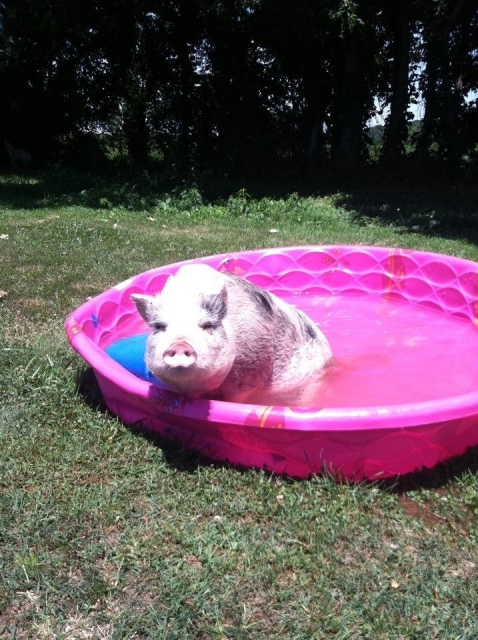 Wilbur: My Pot Belly Pig
Question
Wilbur
I was wanting help understanding
Wilbur: My Pot Belly Pig
Question
Wilbur
I was wanting help understanding
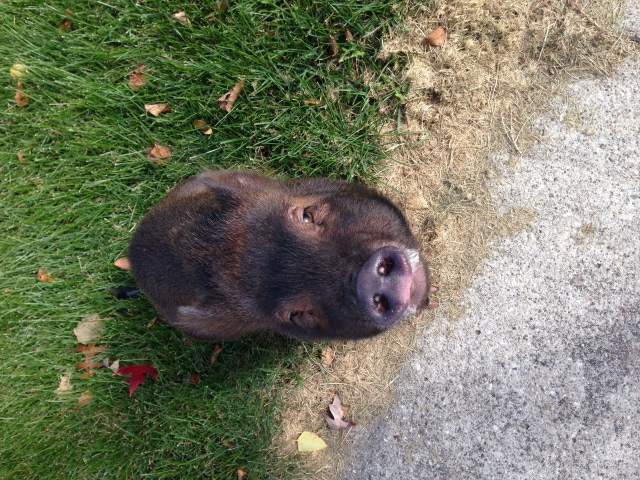 Chewing pig
Question
Willie Nelson
My pig Willie Nelson is 5
Chewing pig
Question
Willie Nelson
My pig Willie Nelson is 5
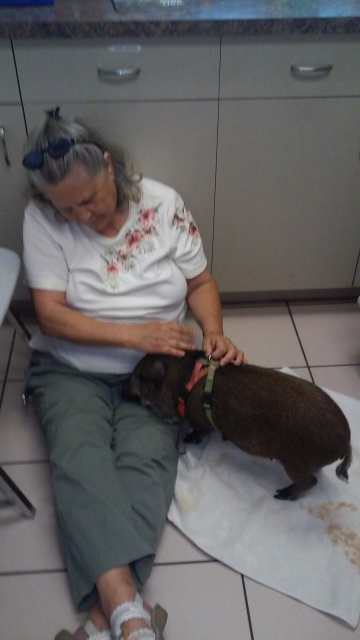 Just spayed pbp
Question
Sophia
Sohia was spayed a day and a hal
Just spayed pbp
Question
Sophia
Sohia was spayed a day and a hal
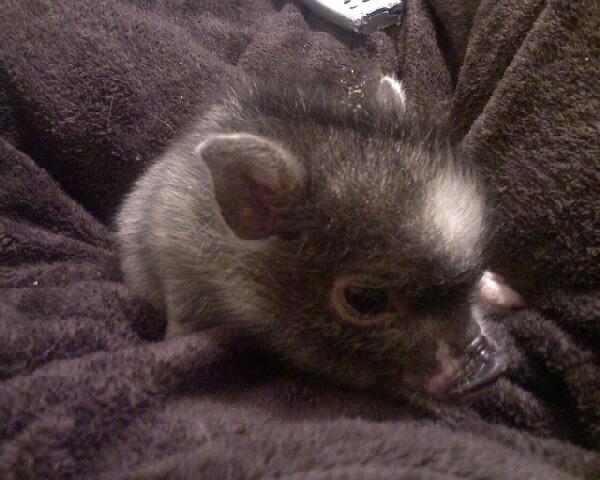 Pig Questions!
Question
Lola
Hi! I recently got a little juliani mix p
Pig Questions!
Question
Lola
Hi! I recently got a little juliani mix p
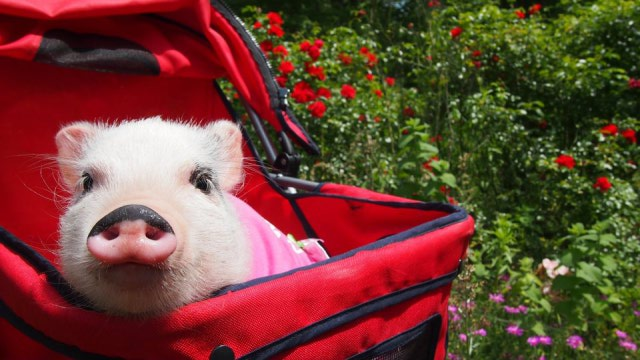 bruises
Question
lulu
me 5 month old mini pig is bruisi
bruises
Question
lulu
me 5 month old mini pig is bruisi